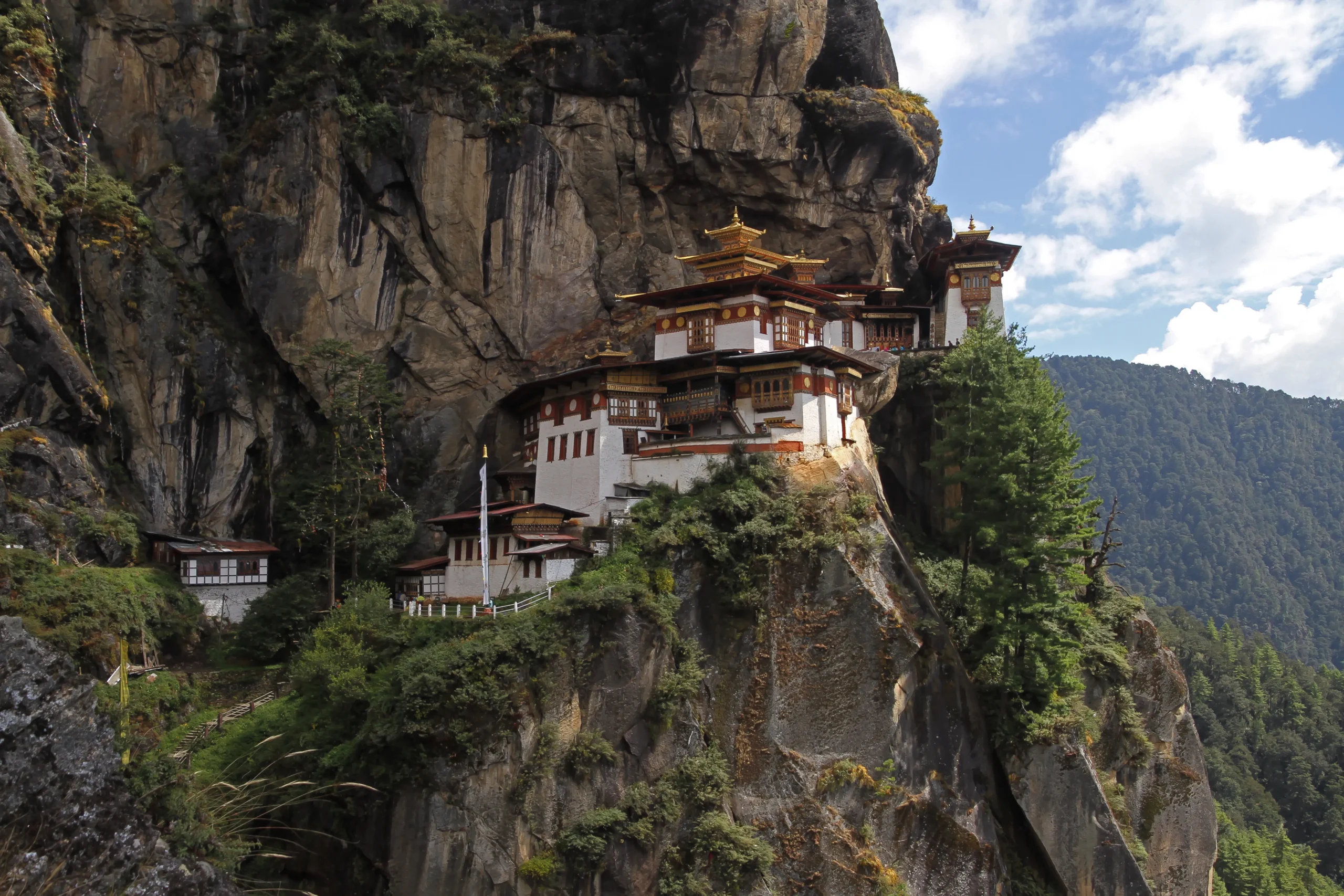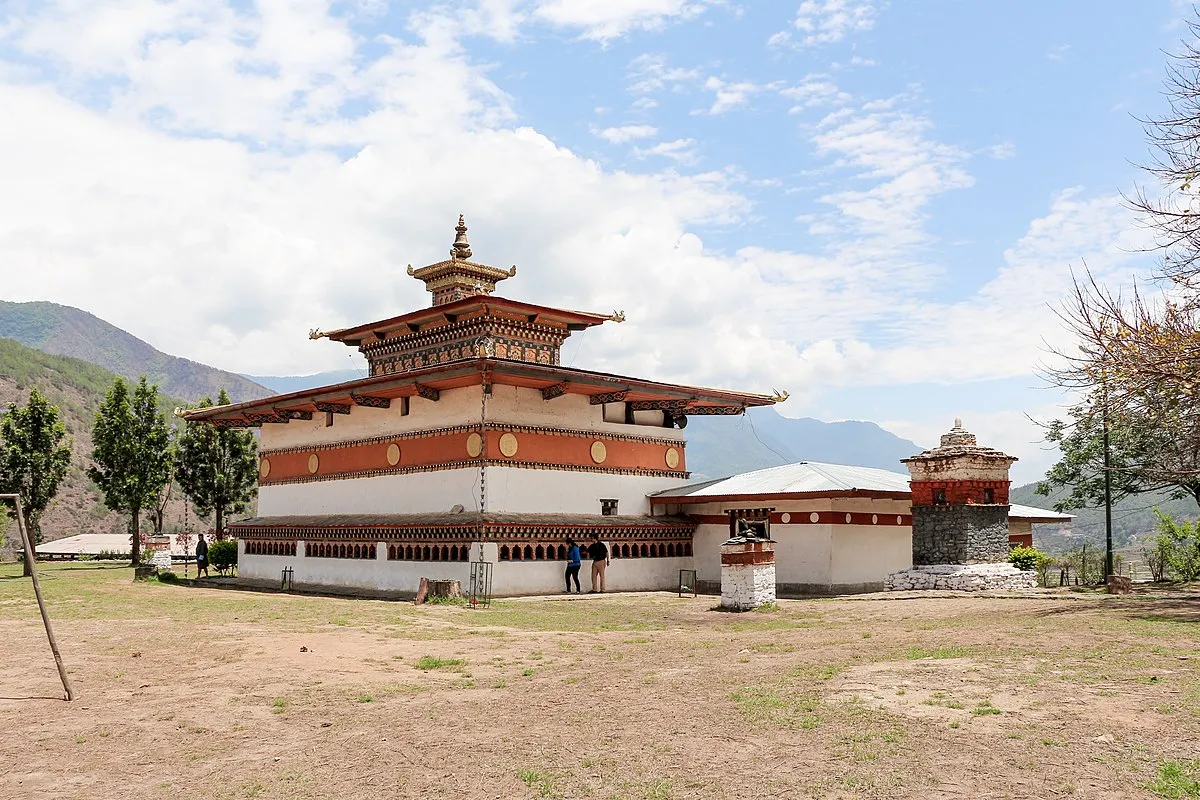1. Overview
Paro Taktsang, also known as Tiger’s Nest Monastery, is one of the most iconic landmarks in Bhutan, located on a cliffside at 3,120 meters above sea level in the Paro Valley. The monastery is a sacred site for Bhutanese Buddhists and is believed to be the place where Guru Rinpoche (Padmasambhava) meditated in the 8th century. The stunning location, perched dramatically on a rocky cliff, offers visitors breathtaking views of the surrounding valley and is a popular pilgrimage site, attracting thousands of tourists each year.
Location – Google Maps Link
2. History
- Founded in the 8th century by Guru Rinpoche, who meditated here for three years, three months, and three days.
- The name Taktsang means “Tiger’s Nest” in reference to the legend that Guru Rinpoche flew to the site on the back of a tigress.
- The monastery was constructed in 1692 by the Penlop of Paro, Gyaltse Tenzin Rabgye, to commemorate Guru Rinpoche’s meditation.
- The monastery consists of four temples, linked by a series of stairways and paths carved into the mountain.
- The monastery was partially destroyed by a fire in 1998 but has since been restored and remains a vital cultural and religious site.
- Taktsang is considered one of the most important pilgrimage destinations in Bhutan, particularly for followers of the Drukpa Kagyu school of Tibetan Buddhism.
- It is perched on a 1,200-meter cliff, making it one of the most dramatic and visually striking monasteries in the world.
- The monastery offers stunning panoramic views of the Paro Valley and the surrounding Himalayan mountains.
- The hike to Taktsang is a physically demanding trek, taking about 4 to 5 hours round trip.
- Taktsang is a UNESCO World Heritage Site and is considered a symbol of Bhutan’s cultural identity.
3. What Makes Paro Taktsang Popular?
Paro Taktsang is famous for its breathtaking location on the side of a cliff and its deep spiritual significance in Bhutanese culture. It is one of the most recognizable symbols of Bhutan and offers visitors a chance to witness one of the country’s most revered monasteries while hiking through the beautiful Paro Valley. The monastery’s mystical aura and the legend of Guru Rinpoche make it a must-visit for anyone traveling to Bhutan. The hike itself is both a physical and spiritual journey for many pilgrims and tourists alike.
4. Overall Ratings (1 to 5 Stars)
Overall Rating: ⭐⭐⭐⭐⭐ (5/5)
Historical Significance: ⭐⭐⭐⭐⭐ (5/5)
Scenic Beauty: ⭐⭐⭐⭐⭐ (5/5)
Cultural Experience: ⭐⭐⭐⭐⭐ (5/5)
Accessibility: ⭐⭐⭐⭐☆ (4/5)
5. Weather
Best Time to Visit: March to May and September to November
Temperature Range: 5°C to 20°C
Ideal for trekking and outdoor exploration during these cooler, clearer months.
6. Nearest Five Hotels
- Taj Tashi Bhutan – A luxury hotel with traditional Bhutanese design and modern amenities.
- Le Méridien Thimphu – Upscale accommodations in the heart of Thimphu.
- Hotel Osel – Comfortable and affordable, offering easy access to the city and attractions.
- Norkhil Boutique Hotel & Spa – A boutique hotel with wellness features, perfect for unwinding after the hike.
- Hotel Druk – Historic and centrally located, ideal for tourists looking to explore Thimphu.
7. Timings
Open: Daily
Hours: The monastery is open from 7:00 AM to 5:00 PM for visitors and pilgrims.
Note: Best to arrive early to avoid crowds and enjoy the quiet atmosphere.
8. Time Required to Visit
Visit Duration: 4 to 6 hours
The hike to Taktsang and back can take between 3 to 5 hours, depending on your pace and stops.
9. Entry Fees & Ticket Booking Details
Entry Fee:
- Bhutanese nationals: Free
- SAARC nationals: BTN 500
- International visitors: BTN 1,000
Booking: No advance booking required; tickets are available at the entrance.
10. Things to See & Do
- Hike up to Taktsang Monastery, enjoying stunning views along the way.
- Visit the four temples inside the monastery, each with unique features and religious significance.
- Take in the panoramic views of the Paro Valley from various points along the hike.
- Meditate or reflect in the serene monastery courtyard.
- Take photographs of the dramatic monastery perched on the cliffside.
11. Best Time to Visit
Season: Spring and Autumn
Time of Day: Early morning for cooler temperatures and fewer crowds
Day of Week: Weekdays for a quieter experience
12. Nearest Parking Spots
- Parking is available at the base of the hike near the entrance.
- Private vehicles can park in the designated parking lot at the trailhead.
- Public transport or taxis can also drop visitors off at the start of the trek.
13. Tips for Visitors
- Wear comfortable hiking shoes suitable for steep terrain.
- Carry water, snacks, and sun protection as the trek can be physically demanding.
- Respect local customs and the spiritual significance of the site.
- Wear modest clothing suitable for a sacred site.
- Take your time and pace yourself on the hike, as the altitude can make it challenging.
14. How to Reach the Place
By Car: The monastery is a 30-minute drive from Paro town to the trailhead.
By Taxi: Available from Paro town to the start of the trek.
By Tour: Most tours to Taktsang include transportation from Paro to the base of the monastery.
15. Nearby Attractions to Combine for the Visit
- Rinpung Dzong – A fortress-monastery in Paro, also known as the “fortress of the heap of jewels.”
- Kyichu Lhakhang – One of Bhutan’s oldest and most sacred temples, located near Paro.
- Taktshang Goemba (Taktsang Goemba) – A neighboring monastery offering views of Paro Taktsang.
- National Museum of Bhutan – A museum located in Paro Dzong, showcasing Bhutan’s history and culture.
- Buddha Dordenma – A massive Buddha statue offering panoramic views of Thimphu Valley.



